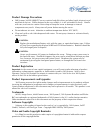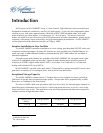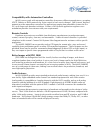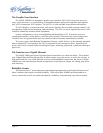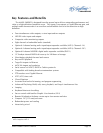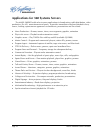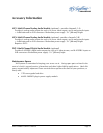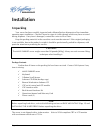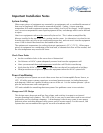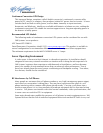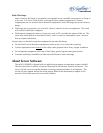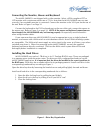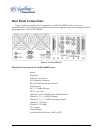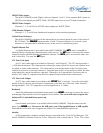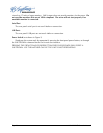
MAXX-2400HD Owner’s Manual Page 19
Important Installation Notes
System Cooling
When many pieces of equipment are mounted in an equipment rack, a considerable amount of
heat may be produced, which must be removed efficiently. Further, a lower operating
temperature will make equipment operate more reliably, and it will last longer. In the extreme
case, excessive temperatures cause rapid equipment failure, and damage which can be difficult
to repair.
Heat in an equipment rack must be removed by forced air. This is often accomplished by
blowers installed in the top of the rack, venting into the room. An alternative is to draw hot air
from the top of the rack into an air-conditioning return duct, and not vent it into the equipment
room. Cold air should be ducted into the bottom of the rack.
The optimum air temperature for cooling electronic equipment is 25° C (72° F). When many
pieces of equipment are contributing to the heat load, a substantial air-flow will be needed, and
the inlet temperature may need to be lower.
Check These Points
• Are the ventilation holes in the server free of obstruction?
• Can blowers or HVAC system adequately remove heat from the equipment rack?
• Have you measured the actual temperature inside the rack? Do this near the top.
• Verify that the HVAC system is not on a timer that can shut off on weekends or holidays.
• What procedures are in place to protect the equipment when the HVAC system fails?
Power Conditioning
It is good practice to operate an on-air video server from an Uninterruptible Power Source, or
UPS. All utility power systems experience occasional transient events, including brownouts
and dropouts, which are capable of taking a server off the air. It is the station operator’s job to
plan for and overcome such contingencies.
UPS units suitable for smoothing short-term power line problems come in two varieties:
Change-over UPS Design
This design senses drop-outs and low line voltage, and switches its output to an internal
inverter operating from a battery. This UPS is low in cost, and is most often used in non-critical
applications such as desk-top computers. A disadvantage is that it may create its own power
transients when switching between utility power and its inverter supply. For this reason, 360
Systems does not recommend this type for use with a broadcast server.



